Current hits are their first reason to tune in, but listeners of your CHR station probably want more than a repetitive Top 40 format.
Following part 3 of our talk with Robert Johansson on music scheduling for Top 40 radio stations, here’s more on how to make your Contemporary Hit Radio music format number 1. While it’s impossible to just play music that everyone loves, you absolutely can create positive listener expectations and positive music images where listeners feel that a song they like or love is always coming up soon.
“Pay higher attention to how females rate the songs”
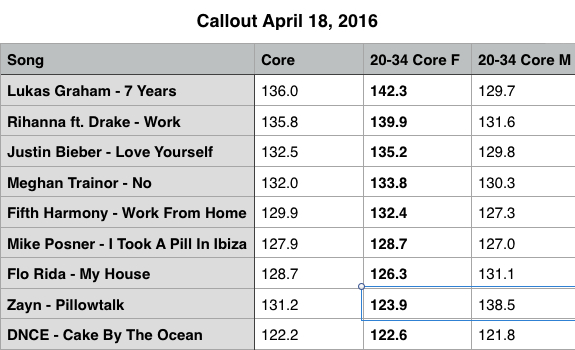
You might want to give songs that are popular with female listeners slightly more airplay than songs that are (mostly) popular with male listeners, as females seem to drive CHR ratings more than males (image: Thomas Giger)
Look at demographic appeal
Music research helps you define for each song to which individual segment(s) of your target audience it appeals, so you can let your playlist consistently reflect all music clusters within your format. “There are multiple ways to do this in your music scheduling software”, Johansson says, mentioning sound codes as one of them. He emphasises that it all depends on a station’s music research, and on a station’s programming strategies based on that research.
Play many female-liked songs
As female listeners seem to drive ratings, we might want to focus on playing songs that are liked by the female part of our audience; giving those titles more exposure than songs that are mostly liked by the male part (while less liked by the female part) of our listeners.
“Yeah, that’s probably right. It might be different from market to market, and station to station. But in some cases; yes.”
Spread your female-disliked songs
How would you (use music scheduling software to) play mostly songs that appeal to females?
“I would look into research and pay higher attention to how females rate the songs, and set a sound code or another parameter for songs that have a low-female appeal. Make sure to separate them, so you don’t play ‘low-female songs’ back to back. You can do a lot in Selector, Powergold or whatever you’re using. There’s not just one way to do it. The main thing is: what do you get from your research?”
“Good radio is a combination of the science of research, and the art of defining”
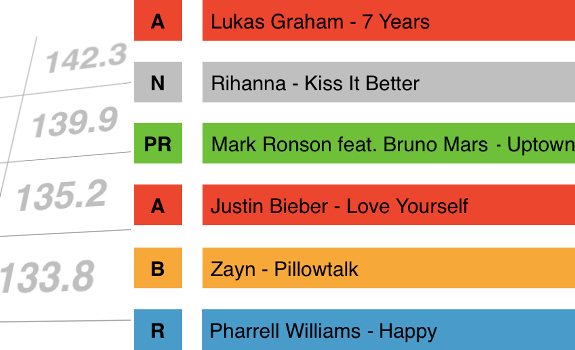
Music scheduling is about which songs you play, and about in which order you play them (image: Thomas Giger)
Define (sound code) guidelines
What’s the smartest way to go with it? Would it be using category levels for ‘female appeal’ songs, or using categories for the general definition of New Music, Power Currents, etc. and instead use coding, like sound codes and other parameters, to fine-tune the music balance?
“I personally favour to use parameters for that. When it comes to songs on your A list or even on your B list, you see a big difference between different parts of your audience. It will be hard to make a category which is just female-leaning.”
Choose new songs wisely
Johansson advises to rather include many female-appealing songs and styles in your music library, based on research to find those titles and genres. When building your music database, it’s important keep in mind what you want to achieve and then make choices based on your strategy. When adding new songs, think of what adds value to your playlist: “You don’t need a copy of Justin Bieber at the moment.”
Balance your music categories
A challenge for today’s Hot AC stations is finding enough good-testing Pop songs for their Recurrent categories: “We need to dig more to find those good additional songs, but it’s very important to have them as they, together with the rest of the music, form the mix. If you would just go by the numbers, and see which songs are really the best, you’d end up with 10 songs! Good radio is a combination of the science of research, and the art of defining; what do you want to achieve, and in which order you play the songs.”
“You don’t want to announce the same song or type of song every time”
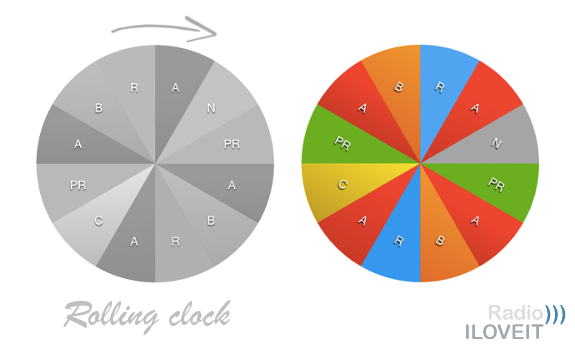
Rolling format clocks can be a welcome refreshment for both your audience and your jocks (image: Thomas Giger)
Platoon your Super Recurrents
Apart from adding new music, how can you add ‘spice’ to a tightly playlisted CHR format?
“Some stations play a couple of Power Recurrents in a higher rotation than usual for a short time, and then, after a few days, switch to other songs in that Super Recurrent category. It can create a feeling of freshness.” He mentions that overall, high rotations (of 130-140 spins a week for current hits) are common now for good reason. “If you’re in a PPM market, you’ll really see how frequent people are tuning out.” It’s not necessarily because the station is bad. There are just many messages out there, from social media and video games to Netflix and Spotify: “The competition for a CHR station today is way more than Station B.”
Rotate your format clocks
Even if most people listen less often (and not as long) to radio than a few years ago, Johansson finds it important to always adapt your music scheduling to people’s daily listening habits. Hence, you want to rotate your format clocks. So, Tuesday from 7-8 AM there should be a different category sequence than Monday from 7-8 AM, as people might be driving to their work 5 days a week around the same timeslot.
Support presenters where possible
“I also think it’s important to create some variety feeling for deejays as well, and not start off every hour with a Power Current song. If they feel some freshness in the format, I think they could sound more positive. If you’re in the studio for 4 hours a day, and play the same titles over and over, you don’t want to announce the same song or type of song every time…” The idea is that by using rolling clocks in a week grid, the first song of a certain hour could be, for example, a Power Current one day, and a Power Recurrent another day. That could add some sense of freshness.”
“The end of a remarkable career for one of the true music legends”
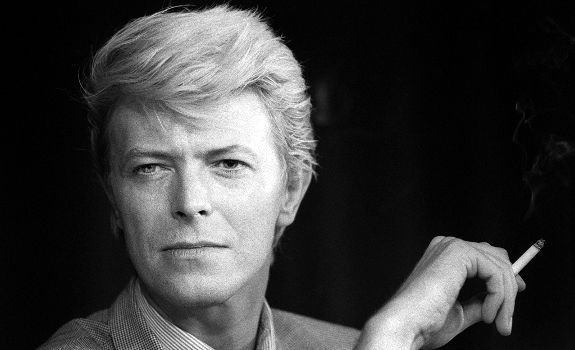
Even if he was not a current-based artist, David Bowie’s death was relevant for many CHR stations (photo: Ralph Gatti)
Kick off with energy
Within that thought of creating a fresh-sounding CHR station, should you use tempo rules like always following a TOTH jingle or a commercial break with an uptempo song, or should tempo be a floating thing and is it more about the music pattern as a whole?
“Primarily it’s about the overall music pattern, but of course, you can get a more positive vibe with an uptempo song. But if you have Adele in ‘Power A’, it’s hard to always start the hour with an uptempo song; she will be sometimes scheduled at the Top of the Hour. But, as said before, Adele is unique.”
Cross format boundaries occasionally
CHR reflects what’s happening now in lifestyle, pop culture and music. What would you do if you’re a Top 40 PD and someone like David Bowie dies. Could you get away with playing a few Bowie songs on a CHR station for a day, as they are sort of ‘current’ again?
“I’m a big fan of playing songs for a specific reason, like when Bowie passed away. But it’s crucial to play the right songs, and not dig too deep.”
Consider using song hooks
“Generally, it’s good to sound current as a station. When Bowie died, it was big news for days, all over the world. Some stations would only play 30-seconds snippets of a song, which makes it easier to get away with it. On the other hand, when you’re playing just 30 seconds of a legendary artist, some people will dislike that. In case of Bowie, it was amazing that he succeeded to release his final album. The end of a remarkable career for one of the true music legends; one of the artists that I grew up with, and really admired.”
“I can find them on my mobile phone anytime”
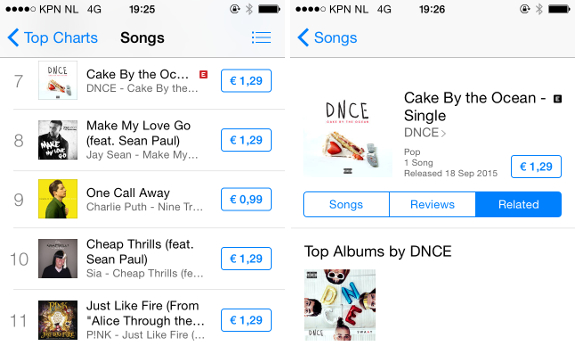
Playing hit music should not be the only USP for Top 40 radio stations (images: Apple)
Power your programming strategy
What do you consider to be the main thing that every CHR music director should always do; what’s the number 1 rule for a hit music station?
“Play the hits, haha! It’s important to build a music library that supports your mission. Work on what kind of music will mix together to fit the strategy of your station, which goes for choosing new music as well as the rest of your library. You also have to follow the trends. People expect you to play new music. Once in a while, take some chances and add new music; you can’t just be a follower as a CHR. And it’s easy to get the image for playing a song if you’re the first.”
Give songs sufficient exposure
When it comes to curating new releases, Johansson thinks it’s not about how many tracks you’re playing. “I’d rather play a small number of songs a lot to make them familiar — and get the image for discovering them — than playing a little bit of everything. If you add only 3 new songs in one week instead of 15, there’s a much greater potential that people will actually notice them. And it’s much easier to win by doing that.”
Trigger additional tune-in motivations
Another key is to give people a reason to return to your station again and again, which is also about things in between the music; your personalities, your entertainment and your content. “If it’s just about the Top 10 songs, I can find them on my mobile phone anytime. You do need to play these songs as they’re expected from your station; hit music is the number 1 reason for people to come to your station. But to keep them, you need to do something more. If you’re just known for one thing; music, it’s much easier for the competition to beat you.”
Thanks to Robert Johansson of Better Radio Programming for this interview.






Thanks, Antal!
And yes, I agree, it’s not just what you do, but also why and when you do it.
Great series! Female orientation is usually successful – of course, male oriented formats need other considerations…
Recurrent – and other – platooning is very effective if you are aware what your competitors are doing with those songs. Timing, planning, monitoring…
Regards,
Antal